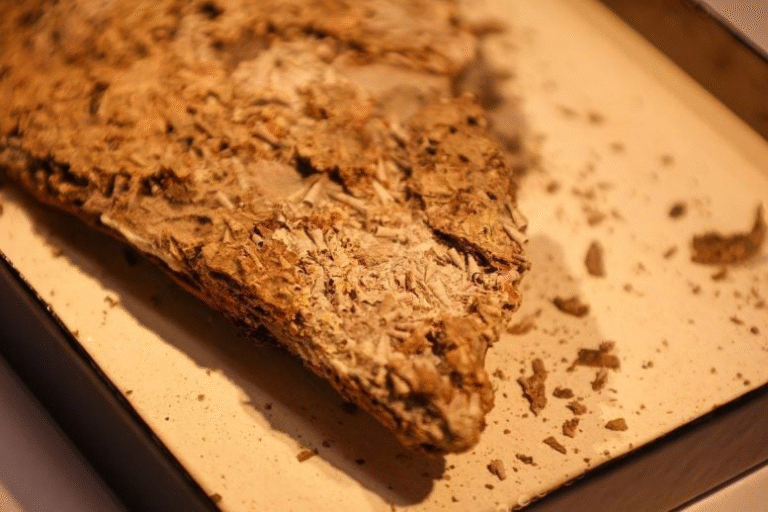Ancient Horsetail Plants Reveal Meteorite-Like Oxygen Signatures That Could Rewrite Earth’s Climate History

A new study from the University of New Mexico (UNM) has revealed something truly unexpected about one of Earth’s oldest plant lineages — horsetails, scientifically known as Equisetum. These humble, reed-like plants may hold the key to decoding Earth’s ancient climate, thanks to an extraordinary discovery involving oxygen isotope ratios that resemble those found in meteorites.
Published in the Proceedings of the National Academy of Sciences (PNAS), the study titled “Extreme triple oxygen isotope fractionation in Equisetum” presents findings that could change how scientists interpret the planet’s climate record preserved in fossils. Led by Professor Zachary Sharp from UNM’s Department of Earth and Planetary Sciences, the research dives deep into how water moves through these ancient plants and how that process alters the ratios of oxygen isotopes in ways never seen before on Earth.
The Discovery That Surprised Even the Researchers
The research team collected samples of smooth horsetail (Equisetum laevigatum) growing along the Rio Grande in New Mexico, roughly 100 meters west of the river. These plants, with their hollow stems and segmented structure, have existed on Earth for over 400 million years, making them some of nature’s oldest survivors.
The scientists measured how oxygen isotopes — specifically oxygen-16, oxygen-17, and oxygen-18 — varied in the plant’s internal water from its base to its tip. What they found was astonishing: as the water traveled upward through the stem, the heavier isotopes became dramatically more concentrated.
At the base, the oxygen isotope ratio (known as δ¹⁸O) was about –8.3 ‰, while at the tip, it climbed to a staggering +82.6 ‰. The deviation in the triple oxygen isotope ratio (Δ′¹⁷O) was equally remarkable, dropping as low as –1,797 per meg. These are the most extreme values ever recorded for any terrestrial material, rivaling measurements typically found in extraterrestrial rocks like meteorites.
Professor Sharp compared the plant’s structure to an engineering masterpiece — a hollow tube with countless microscopic holes that naturally distills water as it moves upward. This intense natural distillation process causes water inside the horsetail to become so enriched in heavy isotopes that its signature looks more like something from space than from Earth.
Understanding Oxygen Isotopes and Why They Matter
To grasp why this is important, it helps to understand what oxygen isotopes tell scientists. Oxygen atoms come in several forms — 16O, 17O, and 18O — each with a slightly different mass. The ratios between them act like a fingerprint that records how water evaporates, condenses, or passes through plants.
When water evaporates, the lighter isotope (16O) leaves more easily, while the heavier ones (17O and 18O) stay behind. This means that, under dry or hot conditions, water becomes “heavier” in isotopic terms. By analyzing these isotopic ratios in ancient materials — such as plant remains, ice cores, or minerals — scientists can infer things like humidity, temperature, and precipitation patterns from millions of years ago.
However, until now, scientists had encountered puzzling data. Some desert plants and fossil samples showed oxygen isotope values that didn’t fit any known models. The results from this horsetail study may finally explain those anomalies.
The Process Behind the Extreme Fractionation
Sharp and his team developed a hybrid evaporation and “chain-of-lakes” model to describe what happens inside Equisetum. As water moves up the hollow stem, it evaporates in stages, just as if it were passing through a series of small, connected lakes. Each step of evaporation makes the remaining water heavier in isotopes, leading to the extreme enrichment observed at the plant’s tip.
This process is known as fractionation — the separation of isotopes due to physical or chemical processes. The study revealed that Equisetum’s unique physiology amplifies this effect far beyond anything previously documented in terrestrial environments.
Interestingly, the researchers also studied phytoliths — tiny silica structures that the plant deposits in its tissues. These microscopic particles can survive for millions of years, effectively locking in the oxygen isotope ratios of the water from which they formed. At the base of the plant, the silica-water fractionation seemed close to equilibrium (around 35.89 ‰), but near the tip, it dropped to 10.3 ‰, suggesting that non-equilibrium processes were dominating as the plant grew.
The team also refined a key coefficient, known as θₖ, which describes how isotopes behave during evaporation. Their measured value of 0.511 ± 0.001 helps explain previous observations of unusually low Δ′¹⁷O values in desert plants and animals.
From Ancient Plants to Ancient Climates
Why does this matter for climate science? Because the same horsetails that grow today also existed hundreds of millions of years ago — and their fossilized forms often preserve phytoliths in excellent condition. Those silica deposits could now serve as paleo-hygrometers, or natural gauges of ancient humidity and water stress.
If the isotope ratios inside fossil horsetails can be accurately measured, they might provide new insights into Earth’s climate during the age of the dinosaurs and even earlier. This would offer a completely new tool for paleoclimatologists trying to understand how humidity and atmospheric moisture have changed over geological time.
Sharp’s team believes this discovery could help reconstruct humidity levels in ancient environments, particularly in arid or semi-arid regions where traditional climate proxies are hard to find.
Why Horsetails Are So Special
Horsetails aren’t just another group of plants. They are living fossils, belonging to a lineage that predates flowering plants and even many tree species. During the Carboniferous period, some species grew over 30 meters tall, forming dense forests that contributed to ancient coal beds.
Modern horsetails, though smaller — usually around a meter tall — still share much of their ancient structure. Their hollow, jointed stems allow for rapid water transport and evaporation, which is exactly what made this new discovery possible.
The plant’s unique architecture means that water inside it experiences multiple cycles of evaporation and condensation, amplifying the isotope effects in a way that no other modern plant seems to do. That makes Equisetum not only a fascinating survivor of Earth’s botanical past but also a natural laboratory for studying isotope processes.
Implications and Future Research
This study doesn’t just solve a long-standing scientific puzzle — it opens up a new field of research. Scientists can now revisit old isotope data from desert plants, fossil phytoliths, and even animal tissues with fresh eyes. The new model explains how extreme isotopic fractionation can occur naturally, without invoking extraterrestrial or unusual environmental causes.
It also highlights how much we still have to learn from simple organisms. A plant that most people overlook by riverbanks or in wetlands may turn out to be a crucial piece of the puzzle in understanding Earth’s climate system.
Future research will likely focus on testing these findings across other plant species and environments. Scientists will also explore how well fossilized horsetail phytoliths retain their original isotopic signatures over millions of years, and whether those signals can be reliably translated into ancient humidity levels.
A Bridge Between Geochemistry and Biology
Perhaps the most exciting aspect of this discovery is how it bridges geochemistry, biology, and climate science. It demonstrates that living plants can create isotope signatures that mimic those of meteorites — a reminder that Earth’s natural systems can sometimes produce results as extraordinary as those found beyond our planet.
For now, horsetails stand as unexpected climate storytellers, offering a record of Earth’s past humidity and environmental conditions locked within their silica skeletons. As Professor Sharp’s team continues to refine their models, these ancient plants may help reveal just how dynamic Earth’s water and climate cycles have been across deep time.
Research Reference: Extreme triple oxygen isotope fractionation in Equisetum – Proceedings of the National Academy of Sciences (2025)





